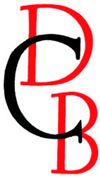
Source: Link
DICKSON, JOHN ROBINSON, surgeon and educator; b. 15 Nov. 1819 at Dungannon (Northern Ireland), son of David Dickson and Isabella Robinson; m. 8 May 1839 Ann Benson of Kingston, Upper Canada, and they had four sons and four daughters, including Dr Charles Rea* and Anne, one of the first female medical graduates in Ontario; d. 23 Nov. 1882 on Wolfe Island, near Kingston.
John Robinson Dickson was apprenticed to an apothecary in 1829. He did not complete his six-year term and spent some time at the Royal Belfast Academical Institution before entering Anderson’s College in Glasgow to study medicine. In 1837, before he had finished his studies, the Dickson family immigrated to Upper Canada and John was apprenticed to Dr John Hutchinson of Peterborough. Dissatisfied with country practice Dickson considered emigrating to the United States. From October 1841 to March 1842 he studied at the University of New York, receiving an md degree. However, because of increased prospects Dickson returned to Canada and in April 1842 was licensed by the Medical Board in Canada West; he opened his practice in Kingston, then the capital of the united provinces. Late in the 1840s John A. Macdonald* became a patient and a close friend. Dickson took his turn as “medical man for the month” between 1846 and 1849 at the hospital (later Kingston General Hospital) organized by the Female Benevolent Society [see Harriet Dobbs].
Dickson was vitally interested in improving medical training in Upper Canada, then acquired mostly by apprenticeship and hospital attendance. So that the hospital might offer better advantages to medical students Dickson joined Dr Horatio Yates in seeking election in 1853 as alderman to serve on the hospital board, then limited to elected municipal officials. They were both successful, and Yates took over reorganization of the hospital. Dickson issued invitations to local doctors to meet at John A. Macdonald’s house in February 1854 to discuss the formation of a medical school. The next month doctors Dickson, James Sampson*, John Stewart*, and Orlando Sampson Strange met with trustees from Queen’s College to propose the plan that led to the organization of the Queen’s faculty of medicine later that year. Dr Dickson was appointed professor of the principles and practice of surgery, and in 1861 became vice-president of the faculty (the title was changed to dean two years later). He received an md degree from Queen’s in 1863.
In 1864 after a year of feuding, first with Dr John Stewart, secretary of the faculty, concerning personal and fiscal matters, and later with William Leitch* and the trustees concerning regulatory demands, Dickson submitted his resignation to Queen’s. Two years later he organized a new medical school, the Royal College of Physicians and Surgeons of Kingston, affiliated with Queen’s for the granting of degrees, which was staffed by former Queen’s professors who had left the university rather than accede to the trustees’ demand that they declare their belief in the doctrines of the Westminster Confession of Faith. Dickson was professor of clinical surgery and president of the new college. In his inaugural address in October 1866 he strongly encouraged the creation of a central examining body in the province to ensure uniform medical qualifications. He managed to have the courses of medical study recognized by the royal colleges of surgeons in both Edinburgh and London, two colleges from which he held degrees. In 1880 the college began a series of medical lectures for women to be given by Dickson and Yates. Unfortunately, largely because of protests from male students, it was short-lived.
In September 1865 the Medical Board became the Council of Medical Education and Registration of Upper Canada, and when it met in June 1866 Dickson served as its first president. He followed James Sampson as surgeon to the provincial penitentiary and at Rockwood Asylum. For some years Dickson had been a member of the provincial commission on lunacy and in December 1869 was appointed medical superintendent of the asylum. An elder of the Presbyterian Church and a strong advocate of temperance he abolished the use of alcohol at the asylum. He served as vice-president of the Canadian Medical Association and was a member of the council of the Botanical Society of Canada.
Dr Dickson organized the Cataraqui Medical Society, which met to hear papers each month, and served as president from September 1880 until May 1881 when he became ill. He retired to his son’s home on Wolfe Island where he died in 1882.
A number of articles by J. R. Dickson appeared in the British American Journal . . . (Montreal), 1860–62.
QUA, Queen’s Univ. medical faculty records, II, box 2, folder 16; X, box 8, vols.1, 8; XI, box 11, vol.1. Macdonald, Letters (J. K. Johnson and Stelmack), II: 163. Chronicle & Gazette, 8 May 1839, 13 May 1842. Daily British Whig, 2 Jan. 1854, 23 Nov. 1882. Canadian biog. dict., I: 348–49. Margaret Angus, Kingston General Hospital, 1832–1972: a social and institutional history (Montreal and London, Ont., 1973). William Canniff, The medical profession in Upper Canada, 1783–1850 . . . (Toronto, 1894).
© 1982–2024 University of Toronto/Université Laval
Image Gallery

Cite This Article
Margaret Sharp Angus, “DICKSON, JOHN ROBINSON,” in Dictionary of Canadian Biography, vol. 11, University of Toronto/Université Laval, 2003–, accessed April 18, 2024, http://www.biographi.ca/en/bio/dickson_john_robinson_11E.html.
The citation above shows the format for footnotes and endnotes according to the Chicago manual of style (16th edition). Information to be used in other citation formats:
| Permalink: | http://www.biographi.ca/en/bio/dickson_john_robinson_11E.html |
| Author of Article: | Margaret Sharp Angus |
| Title of Article: | DICKSON, JOHN ROBINSON |
| Publication Name: | Dictionary of Canadian Biography, vol. 11 |
| Publisher: | University of Toronto/Université Laval |
| Year of publication: | 1982 |
| Year of revision: | 1982 |
| Access Date: | April 18, 2024 |













